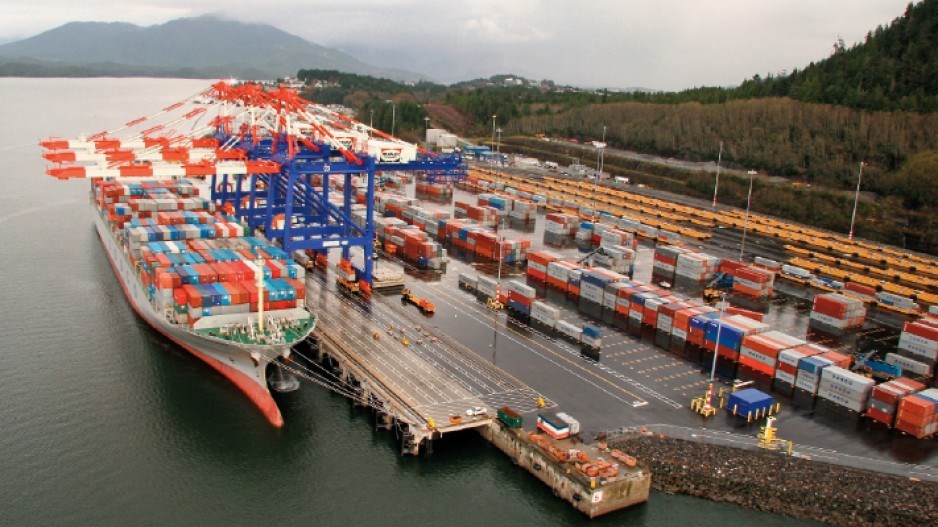A new report recommending that Canada’s shipping network should integrate more fully to lure logistics business from the U.S. is getting a cool reaction from B.C. shippers.
The Asia Pacific Foundation of Canada (APF) report argues that Canada’s ports, rail companies, retailers and other supply chain players should band together to create a North American Gateway (NAG). It argues that a looming infrastructure crisis in the U.S. combined with an “explosion” in trade with Asia makes it the right time for Canada to act.
“We believe that an effective North American Gateway could take 10% of volume from U.S. ports resulting in an estimated 50% increase in container volumes through Canadian ports,” said report co-author George Stalk, a senior adviser with Boston Consulting Group.
The report proposes an IT platform to co-ordinate the various NAG players and recommends investment in key Canadian shipping infrastructure, such as container capacity at the Port of Prince Rupert.
Stalk said the integrated cross-Canada approach would benefit Canadian supply chain players and Canada’s economy.
“[The Port of Prince Rupert] is a natural winner,” he said, noting that it was the only North American port to increase volumes during the recession.
“[Canadian National Railway Co.] is a natural winner because they’ve got the railroad that goes from Prince Rupert into north-central America. [Canadian Pacific Railway Ltd.] could be a winner, particularly with [connection to] Vancouver. They’ll have to work harder at it, but they could be.”
Stalk said the top obstacle to NAG is complacency in Canada’s supply chain.
“Just about everybody in the chain has an attitude that, ‘I’m OK; I don’t see any urgency here.’ That’s the attitude of the railroads, that’s the attitude of some of the retailers, it’s the attitude of some of the ports – it’s not the attitude of the Port of Prince Rupert.”
Thus far, the report has failed to win widespread support in B.C.
Port Metro Vancouver (PMV) has taken a cautious stance.
“Port Metro Vancouver was not involved in the development of the report and as such is still carefully reviewing the information,” said Marko Dekovic, PMV manager of government affairs and strategic communications.
Dekovic said PMV has spearheaded collaboration with its supply chain partners and deemed collaboration the “right” approach for the Asia Pacific Gateway. But he didn’t specify if that collaboration should stretch right across Canada, as the APF proposes.
Dekovic raised a concern that “the focus of the report is on the Port of Prince Rupert.”
CN spokesman Mark Hallmanvoiced no support for the report and instead touted the company’s collaborative efforts through its supply chain.
He also disagreed with the NAG proposal for a new IT platform to integrate Canada’s supply chain further.
“CN already has sophisticated information technology platforms to share critical data and performance metrics with its supply chain partners, including all Canadian ports and their terminal operators, and will continue to work with these partners to ensure increased competitiveness of these gateways,” Hallman said.
However, the report did draw some support from Canadian Pacific Railway (CP) (TSX:CP; NYSE:CP). CP spokesman Ed Greenberg said the company appreciated the APF’s work in pushing for more supply chain collaboration.“Our railway recognizes the further potential from a co-ordinated North American Gateway approach.”
The Prince Rupert Port Authority did not respond to requests for comment by press deadline.




